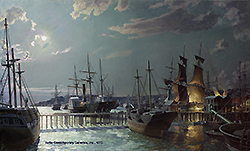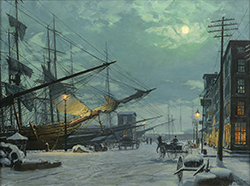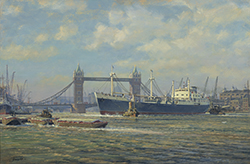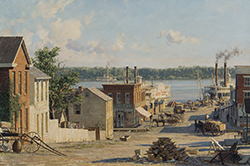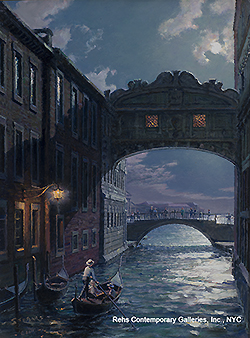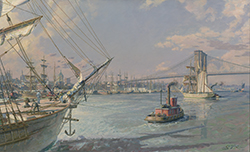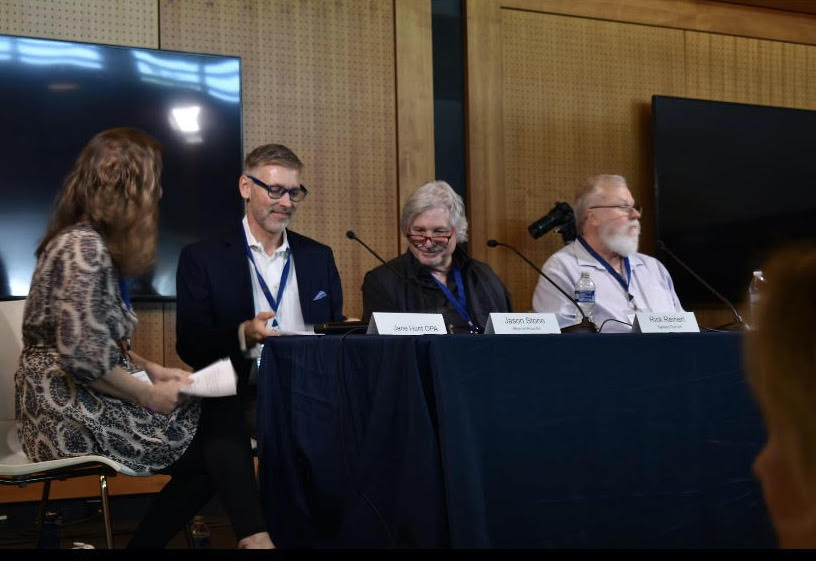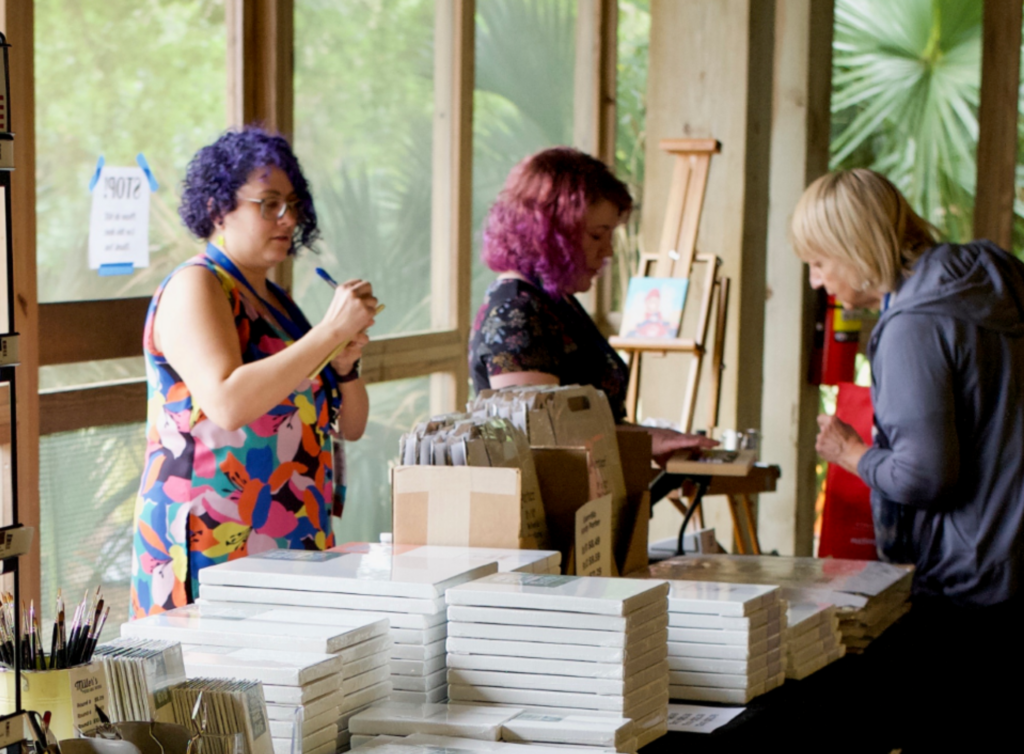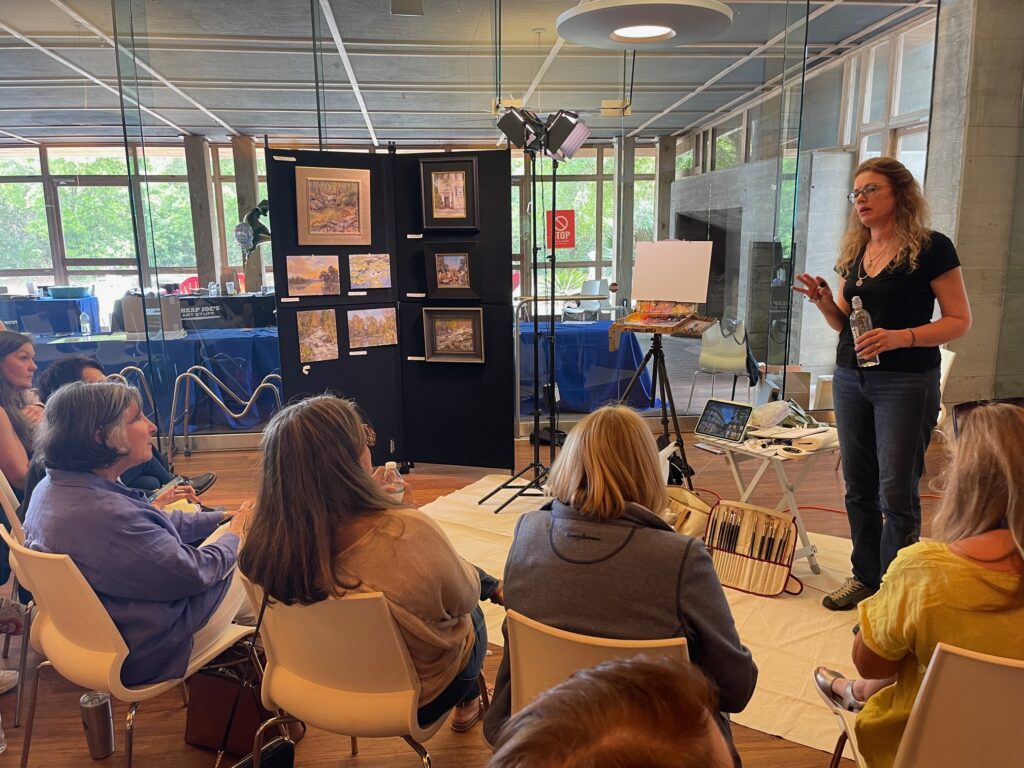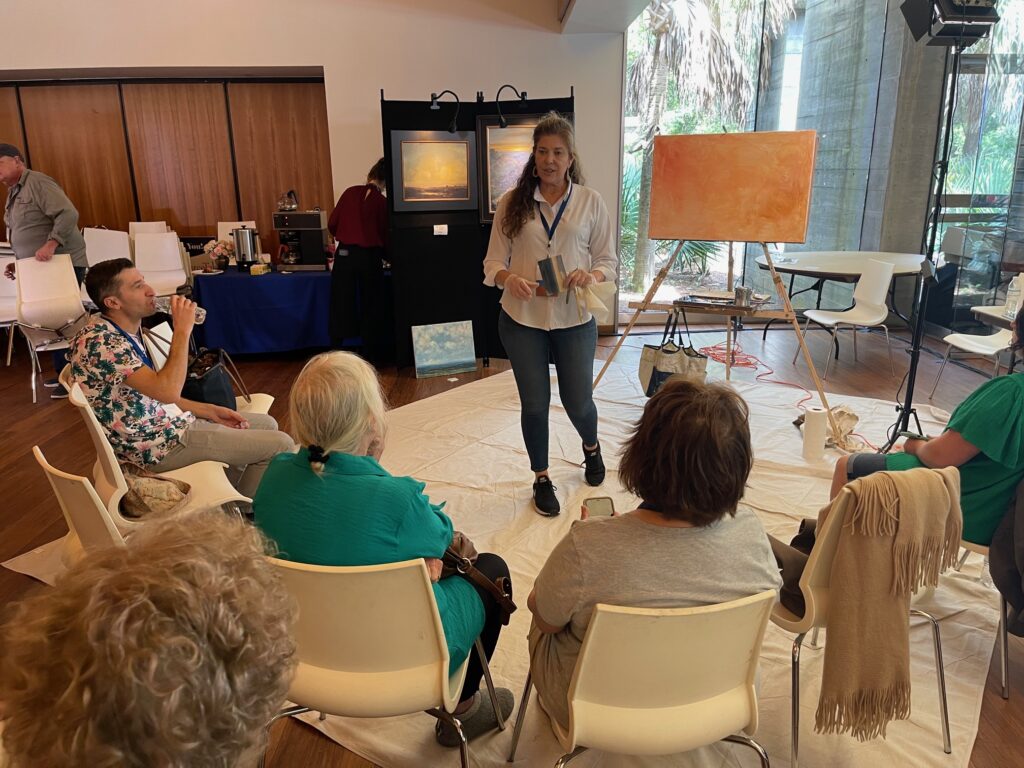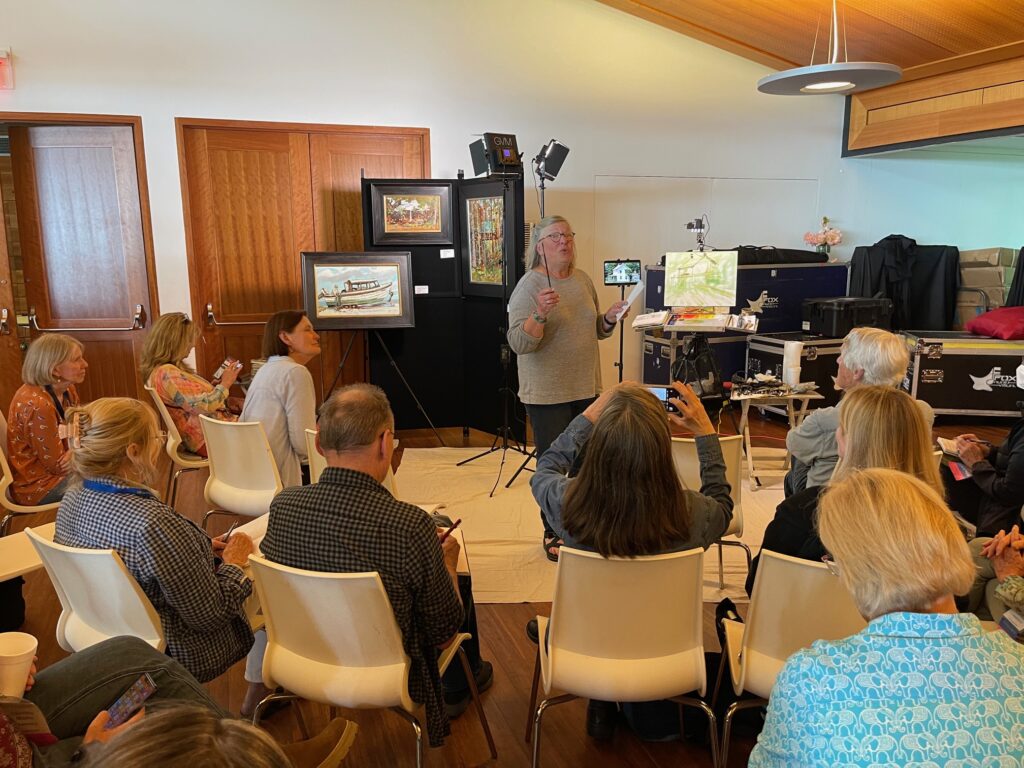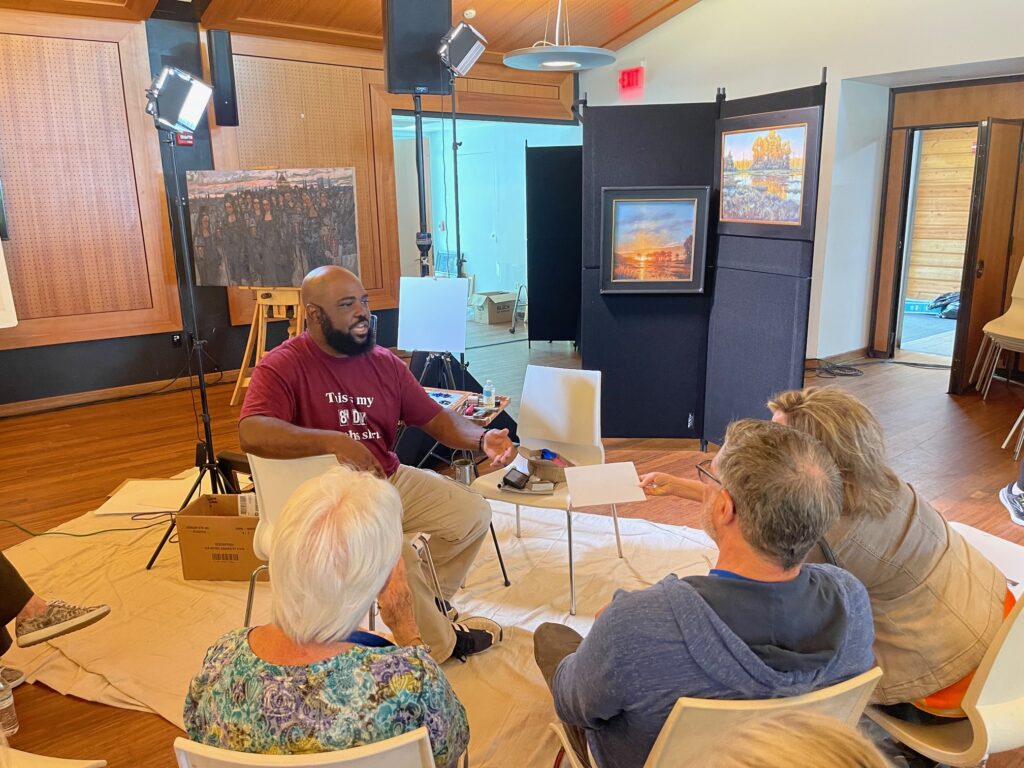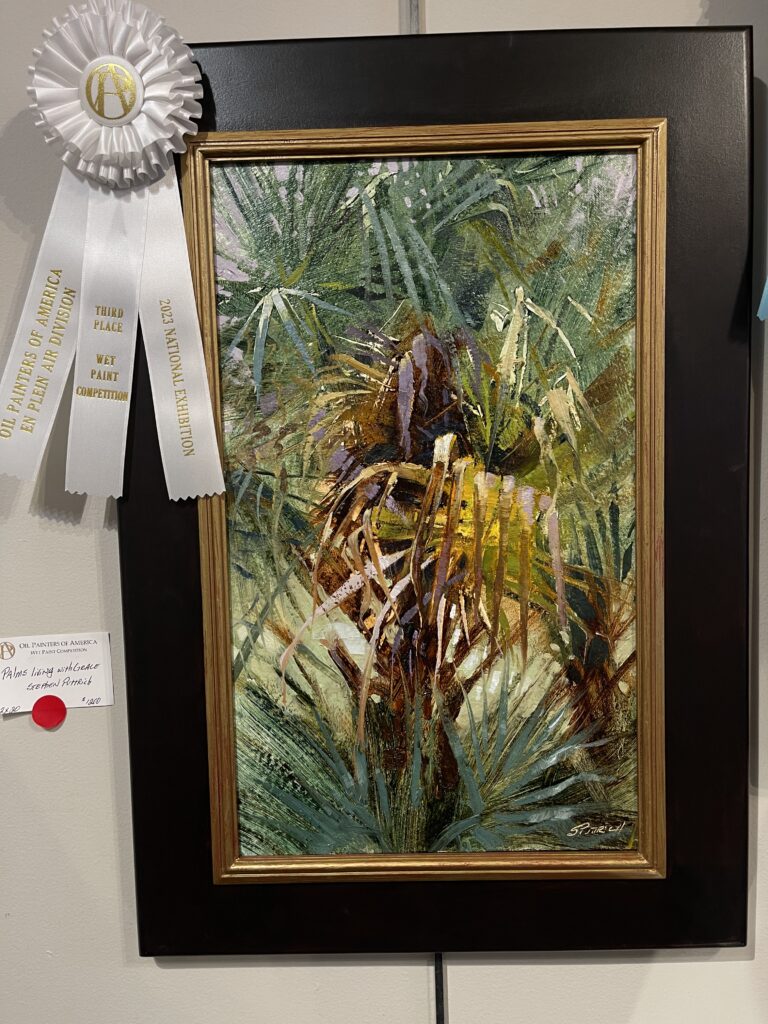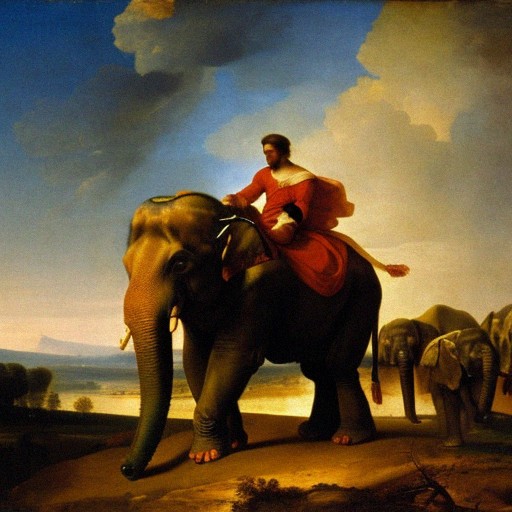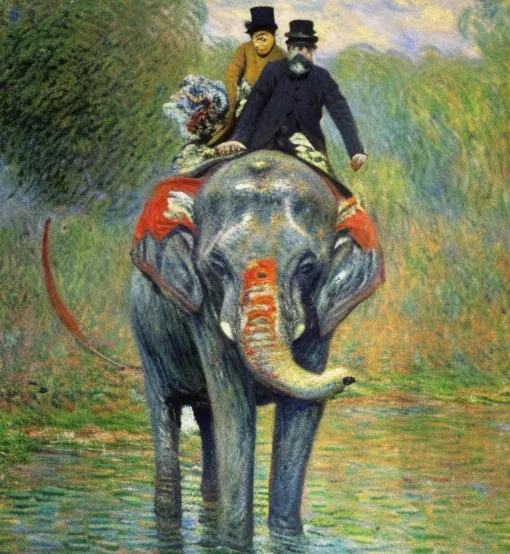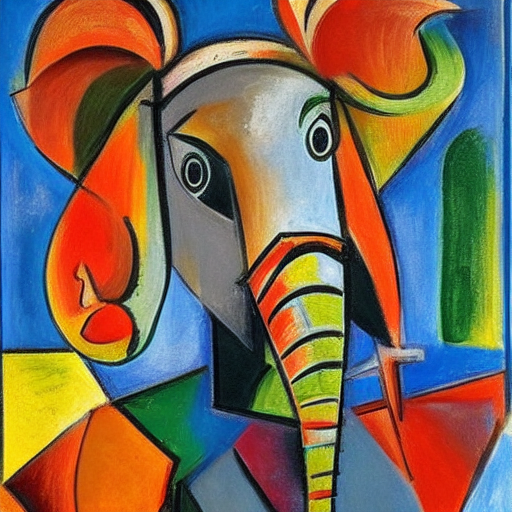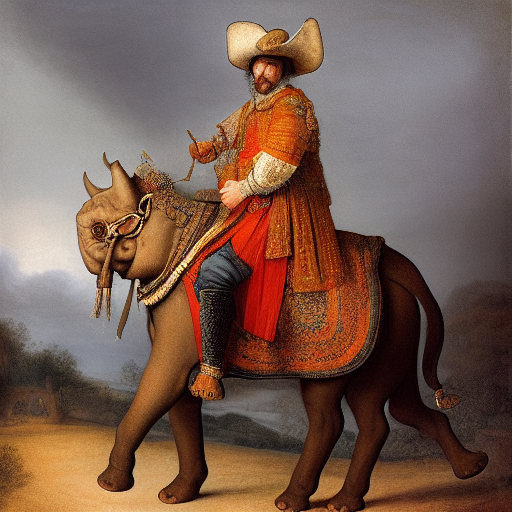The following blog was written by Beth Melillo including parts of an interview with her father, OPA member John Louis Melillo.

14” x 18” – Oil on canvas
Disabled Vietnam Veteran/Contemporary Realistic Oil Painter, John Melillo teaches other Veteran’s to paint inside the Beyond Van Gogh Immersive Experience.
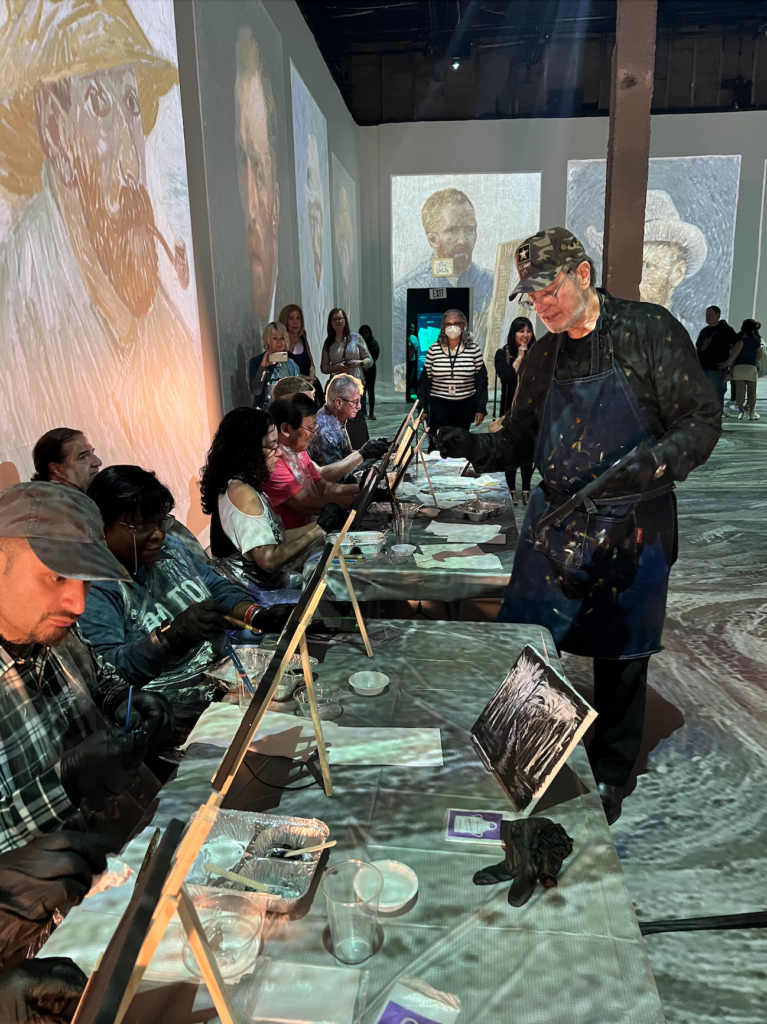
Strength, Honor, Hope, and Courage is an oil painting from my father’s “Life Goes On Part 2” series from this past Veteran’s Day Solo exhibition that describes his story best! I’m honored each day by his strength and endurance as he strives by using art to continue to heal from PTSD. Together we have created an art journey of oil paintings plus video content (I’m a tv producer) that we have shared with the world to build awareness on the healing power of art!
We wanted to share with you my father’s art story. This inspiring event was held literally inside the Van Gogh Immersive Experience Long Island where he taught 10 veterans to paint and explore the power of art! I took photos and produced a video we will share with you to feel as if you were there.
JOHN: “After retiring from a 45 year NYC business pace about 7 years ago, I didn’t realize that this was masking some of the things I had experienced in Vietnam. Now I was having not only nightmares but daymares (flashbacks). I went to the VA for help. Besides all the counseling programs I participated in, they gave me a Vocational Aptitude Test. I scored in the top 1% on creative arts, though I never did anything artistic before. With their help, I enrolled in oil painting art courses at the School of Visual Arts in NYC, NY Academy of Arts, The Met, and The Art League of NY. I also received Business Certificates from Sotheby’s and Christies. In learning to create through art, this gift from God became a “3rd Act in My Life” – a Rebirth. I found a solace and source of healing to deal with my PTSD infirmity.”
My father and I were so excited when the “Beyond Van Gogh: Immersive Experience” was coming to Long Island so that he could experience it. We had the great opportunity to attend the press pre-opening and my father had the distinguished honor to do a personal walk through with Fanny Curtat, Art History Consultant of “Beyond Van Gogh: The Immersive Experience”.
JOHN: “I am a huge Van Gogh fan. You know when you hear the word Impressionist you think of Renoir, Manet, Monet, Seurat, etc. Cubism brings Picasso and Dali to mind. However, there is only ONE style of painting when you see it, you say ‘That’s a Van Gogh’. Fanny Curtat, who curated the Immersive Event, provided a great deal of knowledge and history about him. As we walked through the exhibit, her behind the scenes insights in creating it, brought me closer to this Master. It helped me appreciate Van Gogh, the man, as well as his 300 pieces of art on display.”
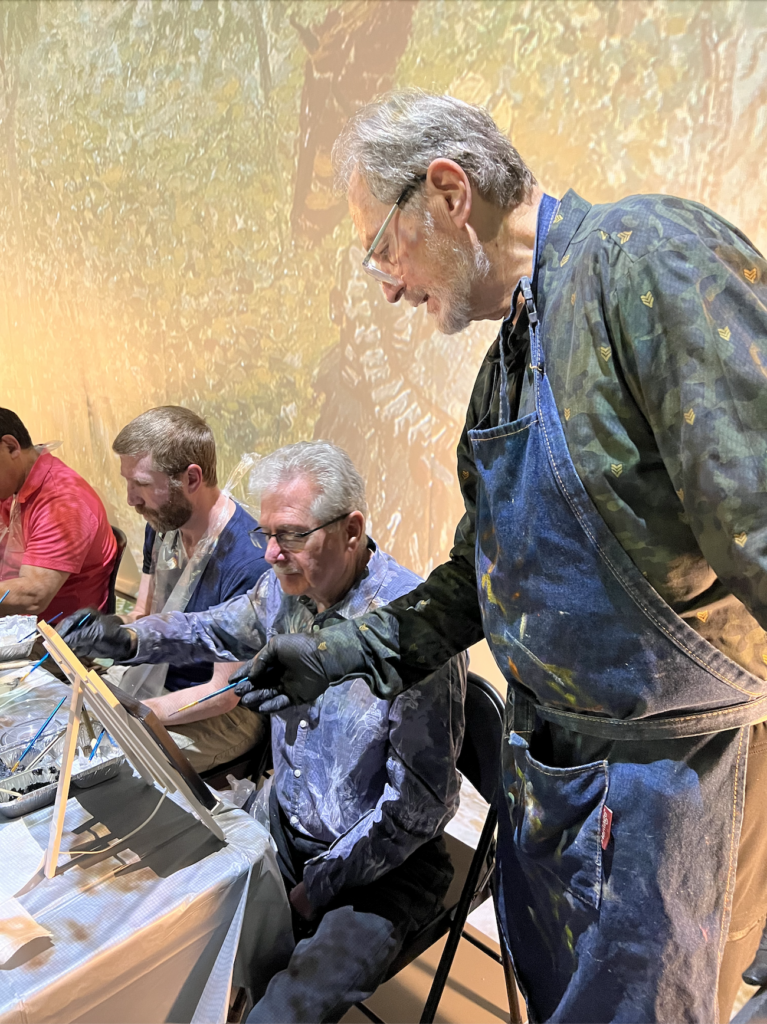
Following this incredibly inspiring preview on the day before opening to the public, the ”Beyond Van Gogh: Immersive Experience” team embraced my father as a Vietnam veteran surviving PTSD through art. We came up with an art workshop idea to have my father teach other Veterans to paint literally inside the “Beyond Van Gogh Immersive Experience” room where Van Gogh’s experience was inspiring all around them. We reached out to 10 Veterans from my father’s network who all had inspiring initiatives to come paint and enjoy the experience.
JOHN: “Working with other disabled veterans in this atmosphere really gave me a true sense of worth. Helping other veterans dealing with their efforts to create was a great inspiration for me as well as additional healing for all of us.
I felt Van Gogh was dealing with dark issues (not unlike PTSD) in his life trying to head Towards the Light with his unique style, brush strokes, and complementary colors. Working with veterans in the actual Immersive Event added inspiration for all of us. In our class we started with a black canvas and built a bright forest. I showed my class how we could go in additional positive directions from there. The response was overwhelming for all of us, I felt.”
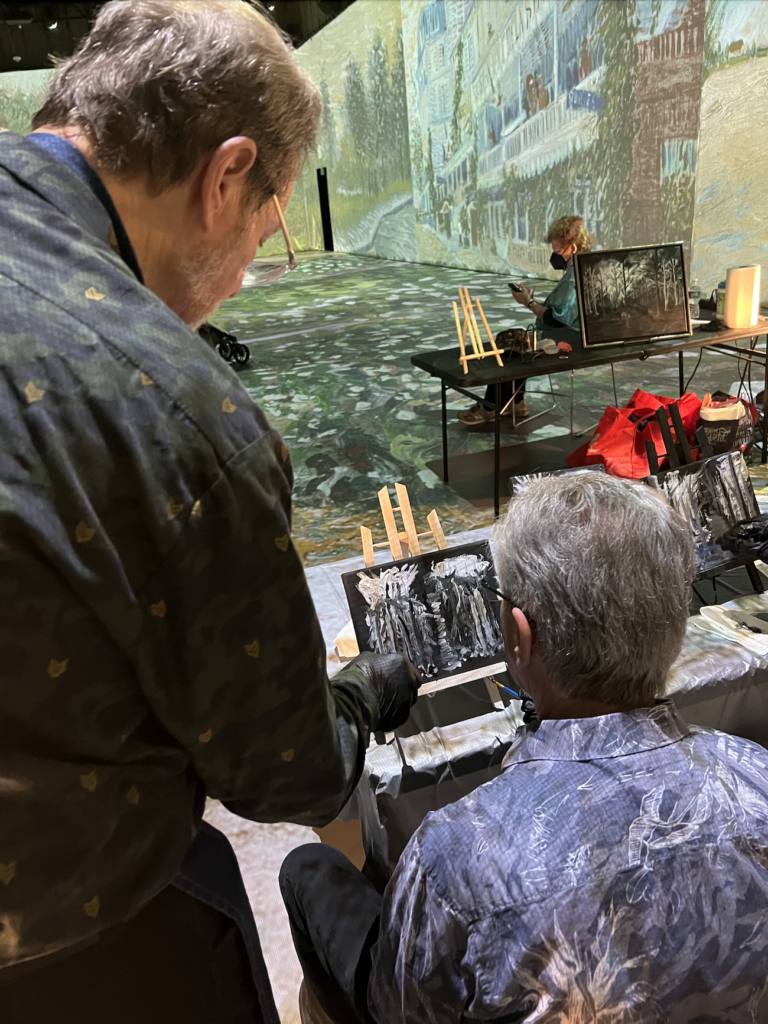
The experience my father and I shared with other Veterans that day under the home of the “Beyond Van Gogh Immersive Experience Long Island” was a unique healing opportunity.
JOHN: “My message and take away is GLOBAL. Everyone has their Vietnams, be it a death in the family, a bad relationship, an illness, an accident, etc. How we deal with it tends to define us.
PTSD is not something that heals. It is something you learn to live and survive with. I suggest you do something GOOD for yourself. Find something that gives you pleasure. If you like to sing, join a choir: read, join a book club: dance, take lessons, and so on. Immerse yourself in something that gives you a sense of accomplishment and you’ll find a path to solace. My (AH HA) moment was learning how to oil paint. Thank you, Lord.”
I’m thankful to share this experience with my father as art continues to heal him in so many creative ways!
Instagram @artfeelingsjm

